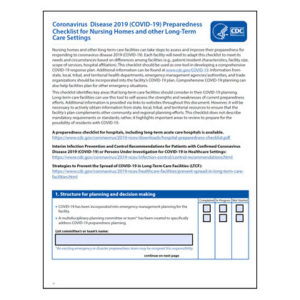Caring for Seniors with Autism
More older adults with Autism Spectrum Disorder are turning up in senior living facilities.
According to the Centers for Disease Control and Prevention (CDC), autism spectrum disorder (ASD) is a “developmental disability that can cause significant social, communication, and behavioral challenges.”
Symptoms of the disorder typically begin emerging between 12 and 18 months of age, and diagnosis usually comes between the ages of two and four years. It can be difficult to diagnose, as there’s no blood test, and milder cases may take longer to appropriately identify.
Although ASD is typically thought of as a childhood disease, there is no cure for it, so it’s something an individual carries for life. Early intervention can lessen symptoms, but for an increasing number of adults, ASD is something they live with every day.
The CDC reports that about 1% of the world population has ASD, and in the U.S., where the population is aging, it should come as no surprise that adults with ASD are moving into senior care facilities. Their unique needs present opportunities and challenges.
How to Help
If you’re noticing more seniors with ASD at your facility, consider how you can improve your offerings and better support these individuals. Here are some suggestions for how to make caring for seniors with ASD a little easier:
- Provide or connect with support groups. Seniors with autism share many of the same needs and challenges as their peers who don’t have ASD. Loneliness and social isolation is a major area of concern, and the challenges may be greater among seniors with autism because their condition makes “typical” social interaction more challenging. Many communities offer support groups for individuals on the autism spectrum and their caregivers. Connect with your local network to find out what’s available and help your residents with ASD take advantage of these resources.
- Use precise language. Because autism affects how people communicate, you may need to use some different approaches and communication styles to reach a senior with ASD to find out what’s going on. Rather than asking a broad question (“How are you?”), be more specific. Ask, “Do you feel tired today?” Or ask about whether a specific body part hurts. Specific questions are more likely to elicit the response and information you’re looking for.
- Be observant. Because seniors with ASD may be less able to communicate their needs or problems, you’ll need to rely on your and your staff’s powers of observation to determine if something is wrong physically or emotionally. Does the individual seem more withdrawn than usual? Is the person limping or showing other signs of injury or illness? If you notice clues, ask direct questions and arrange the appropriate intervention.
- Bring in the right expertise. Getting the right medical and emotional support for a senior with ASD can vastly improve their experience and their ability to integrate more seamlessly into your community. Medical experts can help you develop the right protocols for assisting seniors with ASD to live a full, happy life in your facility. Look to bring in occupational and physical therapists, mental health experts, nutritional experts (if feeding issues are involved), behavioral analysts, and any other specialists who may be able to address the unique needs of the seniors with ASD in your community.
- Provide structure and routine. Many people with ASD benefit from a steady routine. And this extends to providing consistency in the caregivers working with the individual. Sudden changes may be more difficult for adults with ASD to process, so, you should keep daily activities as smooth and structured as you can, with plenty of activities they find engaging.
- Be sensitive to sensitivities. ASD impacts a person’s sensory experience of the world, and as such, bright lights, loud noises, intense smells, and other excessive sensory inputs can trigger negative reactions and cause distress. Be sensitive to the triggers that a senior with ASD may have and aim to keep things calm, quiet, and less distracting.
- Bring your staff up to speed. Make sure any staff members who interact with a senior with ASD understand the sensitivities and limitations that individual may have, and help them understand how to best support a senior with ASD. The World Health Organization Caregivers Skills Training program developed in collaboration with Autism Speaks is a useful resource that provides culturally adaptable training information. Though it’s intended for parents of children with autism, the program still provides valuable insights for caregivers of adults with ASD.
- Develop individual support plans. Each person with ASD is unique, and the needs of one person may vary greatly from another senior with ASD. It’s a spectrum, after all, and thus, care and support plans must be tailored to the individual and his or her specific needs. These plans should include provisions for social interaction, mobility, safety, and health care needs.

Elaine K. Howley is a freelance journalist for various publications. An award-winning writer specializing in health, fitness, sports and history, her work has appeared in numerous print and online publications, including U.S. News, AARP.org, espnW, SWIMMER magazine and Atlas Obscura. She’s also a world-record holding marathon swimmer with a passion for animals and beer. Contact her via her website: elainekhowley.com.
Related Articles
Topics: Clinical , Executive Leadership , Resident Care











